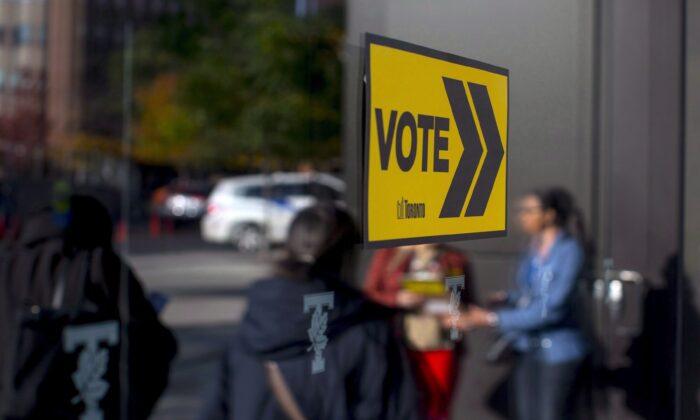In 2021, three major Canadian cities—Edmonton, Calgary, and Montreal—elected progressive mayors. But a year later, voters in Vancouver and Ottawa rejected their more progressive front-runners. Will Canada’s other great metropolis, Toronto, go more right or left in its upcoming mayoral byelection?
“If I were a progressive candidate in Toronto, I would be worried,” Richard Johnston, political science professor emeritus at the University of British Columbia, said in an interview.
Johnston closely followed the race in Vancouver, where candidates campaigned on similar issues and the more progressive side lost. He said that conservatives are often viewed as the stronger choice when it comes to public safety, for example—a big issue in Toronto with its wave of transit attacks, just as it was in the Vancouver election.
But Vancouver’s race had two main candidates, as did Ottawa’s, whereas Torontonians have a medley to choose from.
“You’ve got Ana Bailão and Olivia Chow both on the left. You might not see that in a city with parties, because the left-wing party would all kind of coalesce behind one candidate,” Mike McGregor, an associate professor of politics and public administration at Toronto Metropolitan University, told The Epoch Times.
The Spectrum
More than 60 candidates are running in Toronto.Among the more recognizable names with right-leaning policies are former police chief Mark Saunders, city councillor Brad Bradford, and broadcaster and commentator Anthony Furey, who is also a former Epoch Times columnist.
Joining Chow and Bailão on the left are councillor Josh Matlow and Liberal MPP Mitzie Hunter.
“Chow looks great right now in the polls, but the same was true in 2014,” McGregor said. Chow led the polls in that mayoral race, but finished in third place.
He noted the volatility of polling, with recent polls varying by many points. “People would argue different [polling] companies have different biases,” he said.
Many Torontonians remain undecided, and McGregor expects much will have changed by the June 26 byelection.
“There’s much more potential for change than there is in a federal election,” he said.
In elections with clearer party affiliations, voters are more tied to their identities as a liberal or conservative. “But when there are no parties, things can swing a lot,” he said.
Which Voters Will Turn Out?
Johnston said that in Vancouver’s election last October, “there was a mobilization of the vote in the Chinese community, which is a big and historically under-mobilized part of the electorate.” That swung the vote away from certain progressive policies.In Toronto, McGregor said, a lower voter turnout might favour conservatives. The base of voters in municipal elections tend to be well-established homeowners who lean more conservative, he said. When there’s a higher turnout, that swell might come from progressive voters being mobilized.
It’s hard to predict, however, what the turnout will be, McGregor said. Some think it will be higher because there’s no incumbent so it’s more of an open race. Some think it will be lower because people don’t know as much about the many candidates.
This being a mayoral byelection, the only candidates on the ballot are mayoral candidates—no city councillors or others. “In one way, it makes it simpler,” Johnston said. It may also make it more about the personalities of the individual candidates, he said.
McGregor said “a big portion of it is electability.” Right now, the race is in the policy phase, with candidates presenting their platforms. “The electability phase is yet to come,” he said.
The race will shift as it becomes clearer who is the most viable candidate on the right and on the left, and some less viable candidates may drop out.





